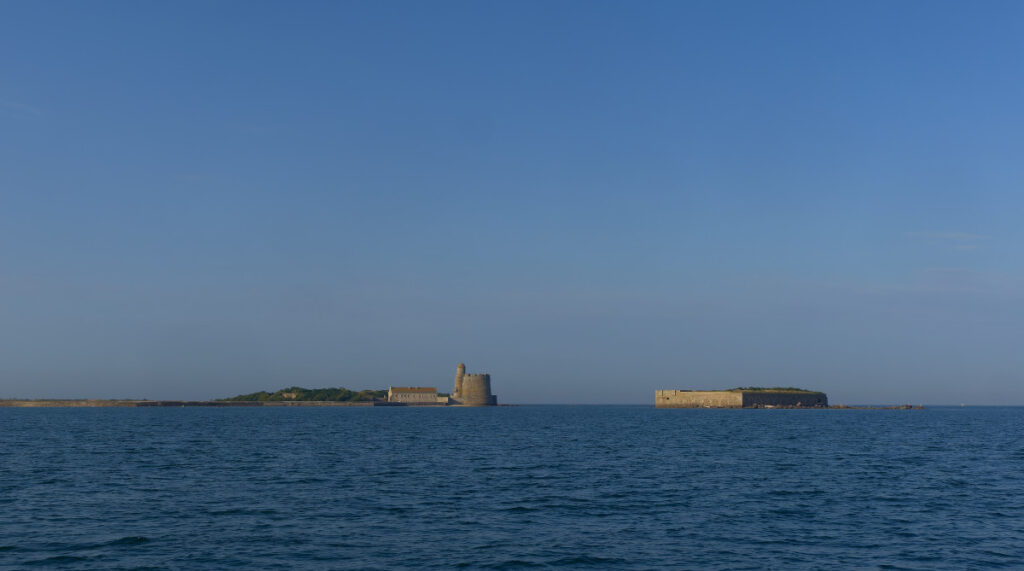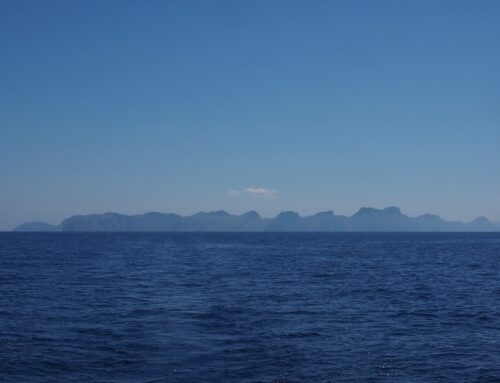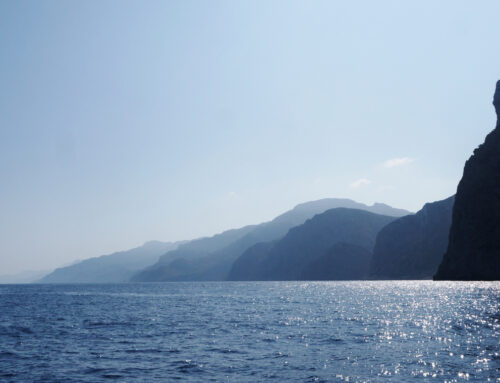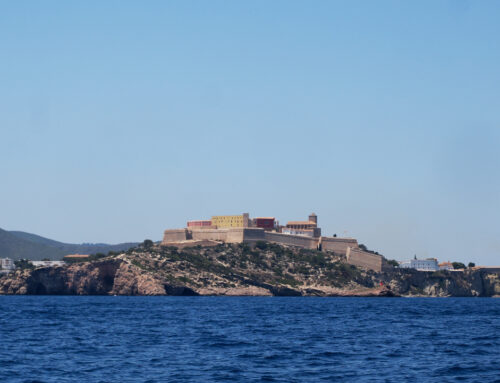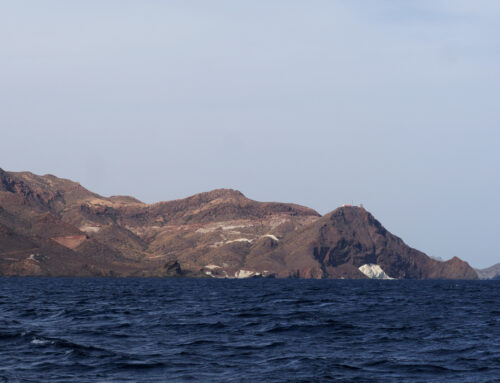Different experiences in Cherbourg
Our first French washing machine
From Tatihou, the hop around Cap Levi to Cherbourg was about 40 nm, with a forecast of light to moderate winds and a sunny day. We headed out past Pointe de Barfleur and then pushed well offshore to keep clear of the shoals and tidal races closer in to the coast. Out there, the wind picked up into the high teens and the seas got bigger along with them making for brisk sailing. OK, it was actually a bit of a washing machine. At about the time we planned to tack back west and into towards Cherbourg, we found ourselves forced to avoid a ‘Zone Interdite’ (no-go area) and an ‘Explosive Immerges’ (explosives dumping ground).
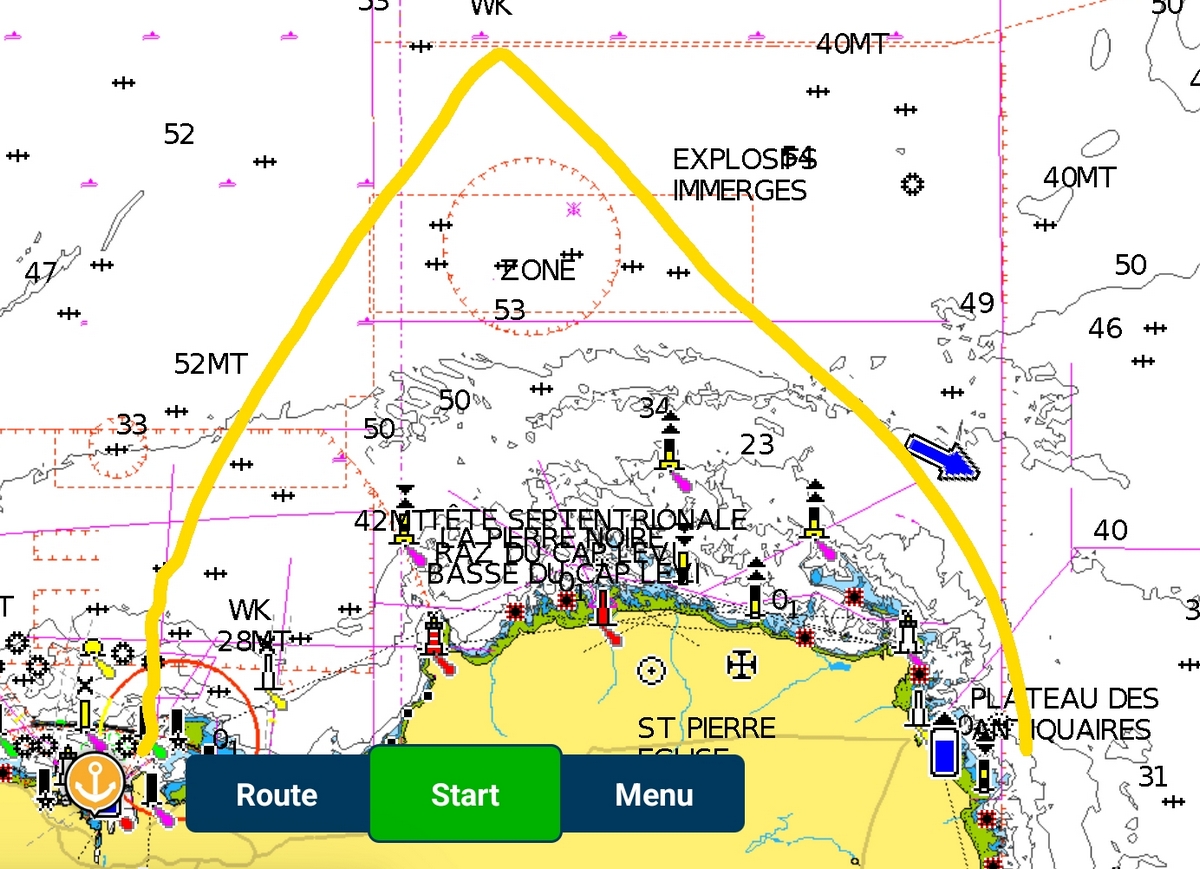
Our track from Tatihou to Cherbourg, avoiding the coastal washing machine, as well as the ‘Zone Interdite’ circle and explosives dumping grounds.
At lower resolution this had been marked as a no fishing area but as we approached and zoomed in closer the reason for not fishing, and the ‘Interdite’ part showed up. So, we ended up going even further out than we’d planned. That had the effect though of giving us a better angle on the wind and so we got to head into Cherbourg at a very good clip.
Entry into Cherbourg
Cherbourg lies in the wide, shallow bay between Cap Levi and Cap de la Hougue. For the unprepared, the approach to Cherbourg from the sea in a small boat is definitely impressive. The city itself is built around the mouth of a river and is closely hemmed in by low rocky hills. These provide a nice backdrop to the massive and heavily fortified sea walls in the foreground that rise tens of metres from the water, and which extend some 5 nm across the sea front. At each entrance and evenly spaced between them are massive, squat towers that were clearly heavily armed in their day. As is our habit we dropped our sails about half a mile outside the entrance only to find once we entered that we still had at least another mile to go before we got to the harbour proper. We had sailed through another one of Vauban’s little design efforts but today, rather than deflecting English armadas, it makes for a very fine sea break providing the town’s residents with a lovely calm harbour in any and all conditions.
Don’t mention Australia?
In Cherbourg the recreational harbour sits immediately adjacent to the huge submarine building facilities of Group Naval.
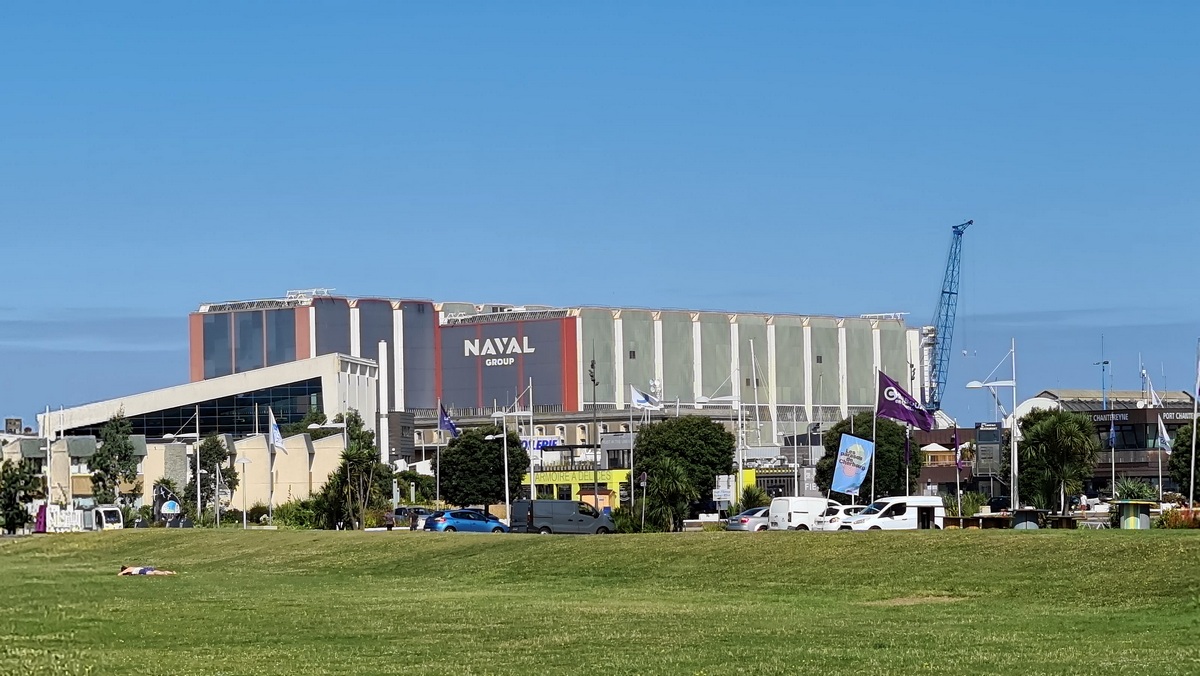
Group Naval headquarters in Cherbourg.
This is the headquarters of the Group Naval, the company which was to build Australia’s new submarines before our ex-Prime Minister, Scotty, pulled a quick one on them and ran off with the Americans and the English. The French were pretty sore about this at the time, though they have updated security agreements with Australia since then so may have decided to put the issue to one side. Nevertheless, we (jokingly) decided to keep the fact of our Australian identities as far under the radar as possible and we definitely didn’t mention Scott Morrison. Our response if challenged? “Sorry, but we bought a French boat even if Scotty didn’t, don’t blame us!” For the record the fact that we are Australian came up several times and was met with only a little interest.
Fine museums in Cherbourg
On offer in Cherbourg was a tour of a nuclear submarine, an aquarium/sea museum and a Titanic exhibition. The first and last were very fine exhibits and well worth the time and effort.
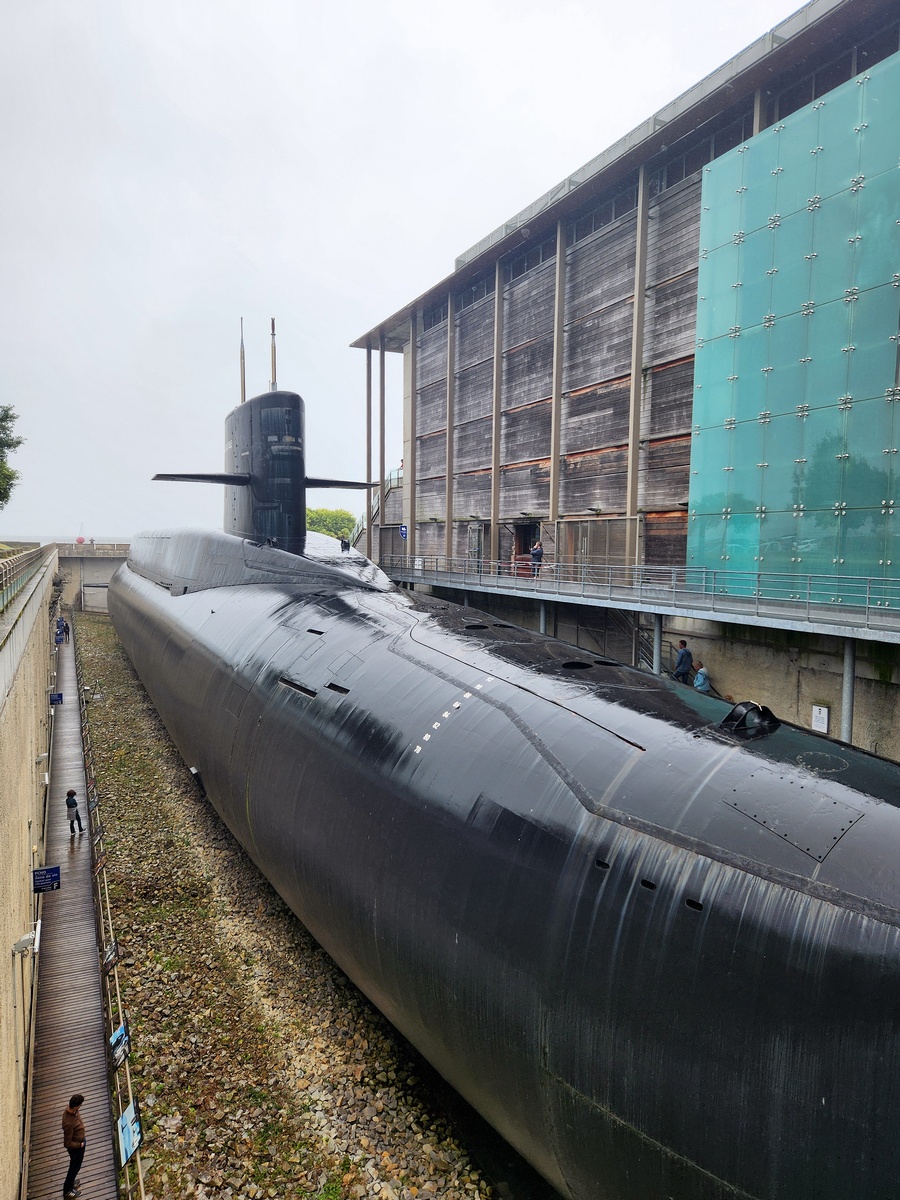
‘Le Redoutable’, French’ first nuclear submarine (128 m), built in Cherbourg and active from 1971-1991. Now a museum piece.
Let’s just say that living on a submarine, nuclear or otherwise, seems like a very silly way to waste away one’s time on this planet.
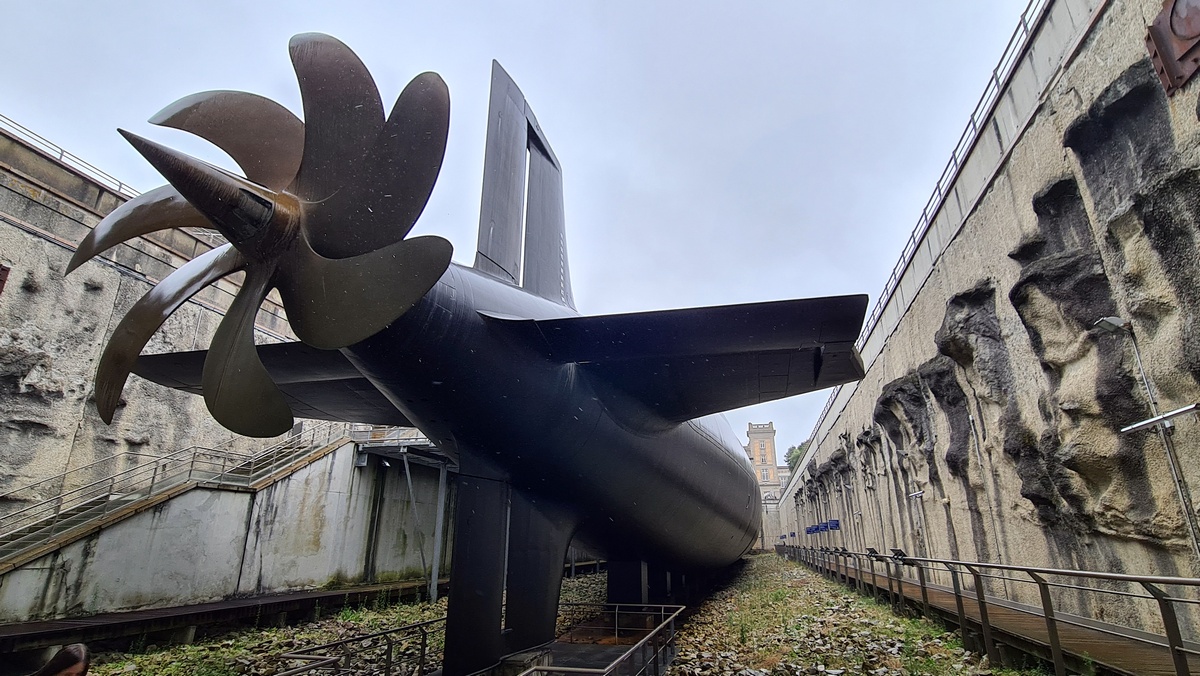
Their prop is bigger than ours…
A cruising friend of ours was sailing the Norwegian coast last year at the same time as we were. Prior to departing the Netherlands, he told us that part of the reason he was delighted to be going to Norway was that, despite the fact that he’d been to Norway a number of times and had spent a good deal of time along the coast, it had always been underwater onboard a submarine so he had seen nothing of the country, the coast or the sea. Not a thing.
The Titanic exhibition
The Titanic exhibit was an extraordinary and detailed examination of emigration, the boat and its development, the crew and passengers and the events of its only outing. It is strange how we like to focus on individual events like the sinking of the Titanic, ignoring the many other examples of similar or even greater scale tragedies. Whatever it was that caught our attention, be it the schadenfreude of the unsinkable ship sinking on its first voyage, the rich and privileged onboard or whatever it was, it certainly did a good job of catching our attention.
We actually hadn’t intended to visit the exhibit, it was just included in our ticket to the submarine, and were about to leave when we thought, ah, there is still a bit of time the place closes, let’s just a have a quick spin through it. Well, damn. We needed a lot more time to get through it all. All credit to the curators, they did a fantastic job of presenting the story of European emigration in the early 20th century and of the experience on board (before during and after the ice incident) in a way the really drew you in. A highlight was certainly the film made from a fixed perspective from the Titanic, starting with the departure from Southampton, arrival and departure in Cherbourg, and finally the collision with the iceberg and the sinking. An interesting detail is that many of the current internationally applicable safety measures for shipping, including for little boats like Yuma, stem from American and British investigations initiated immediately after this disaster.

